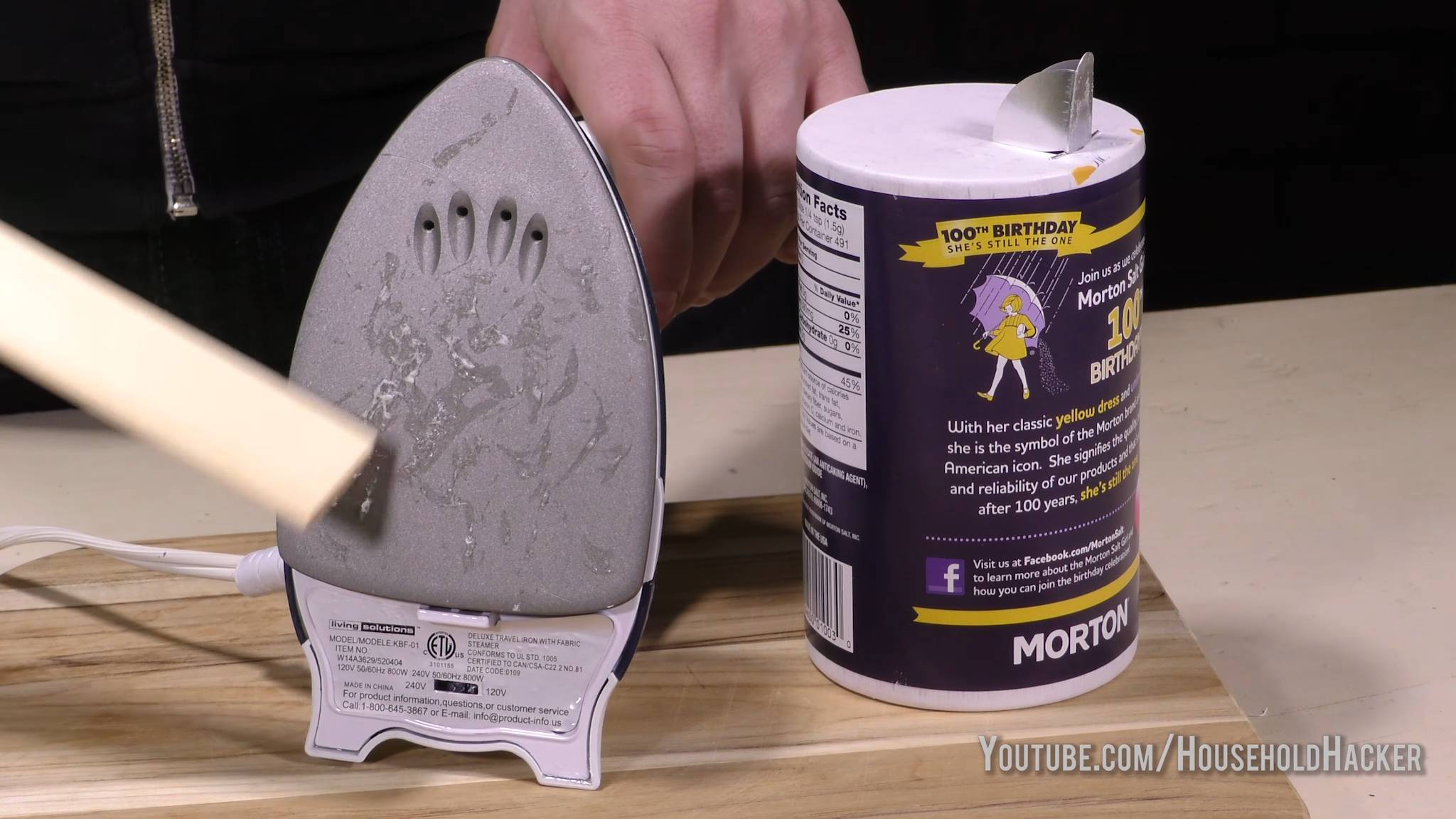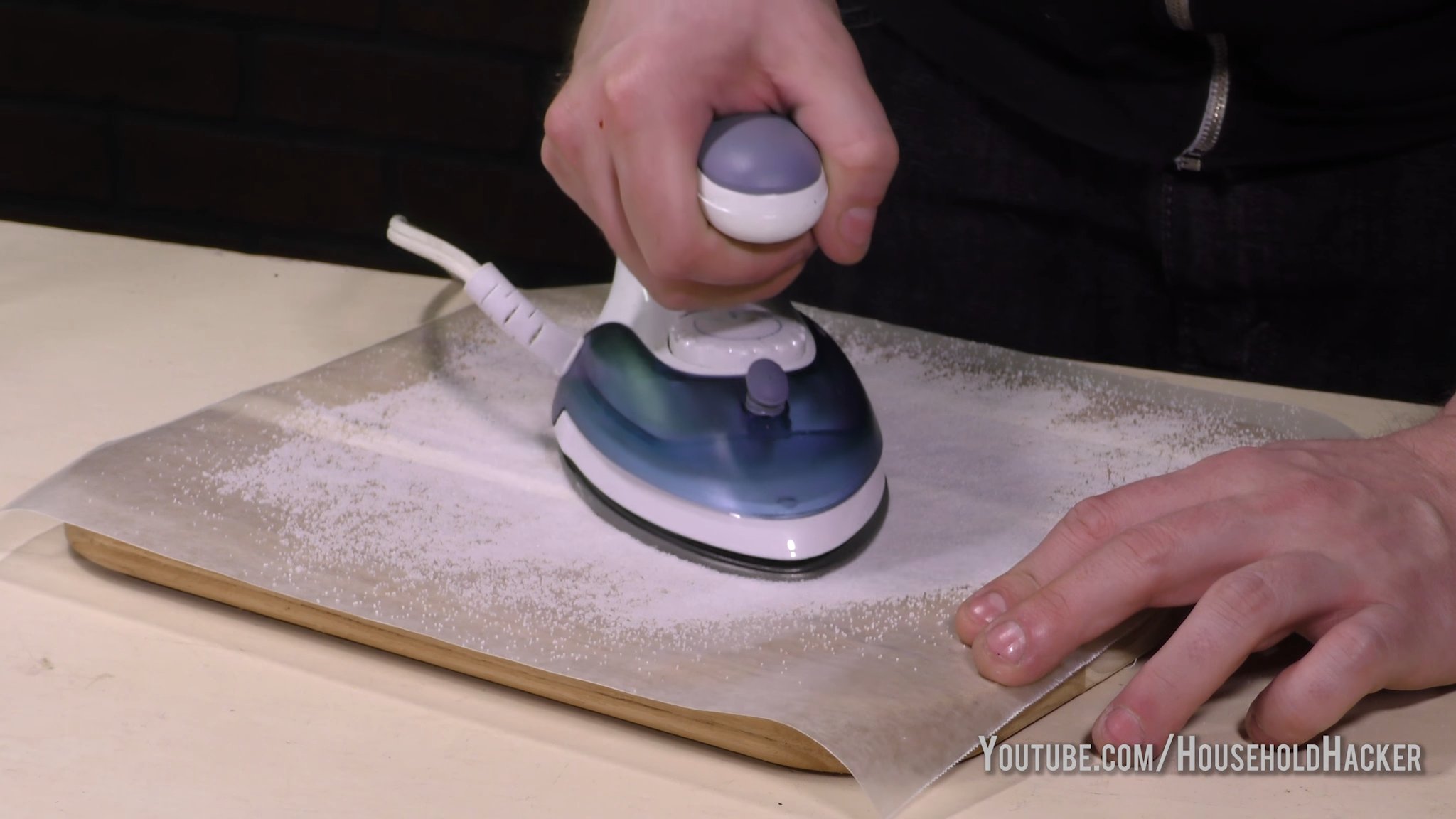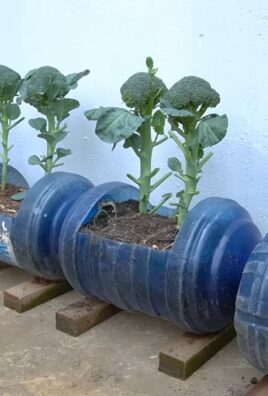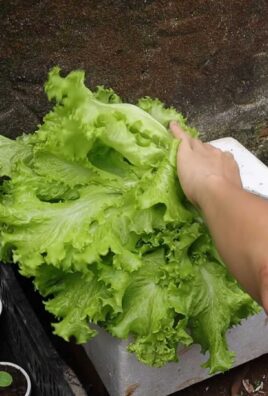Grow Microgreens at Home – ever dreamt of having a tiny, vibrant garden bursting with flavor right on your kitchen counter? Imagine snipping fresh, nutrient-packed greens just moments before adding them to your salad, smoothie, or sandwich. It’s not just a dream; it’s totally achievable, and I’m here to show you how!
For centuries, cultures around the globe have recognized the power of sprouts and young greens. From ancient Chinese medicine to modern-day health enthusiasts, the benefits of these tiny powerhouses have been celebrated. But you don’t need to be an expert gardener to enjoy them. In fact, growing microgreens at home is surprisingly simple and incredibly rewarding.
In today’s fast-paced world, we’re all looking for ways to eat healthier and connect with nature. Store-bought greens can be expensive and often lack the freshness and flavor of homegrown produce. That’s where this DIY guide comes in! I’ll walk you through the easy steps to grow microgreens at home, even if you have limited space or gardening experience. You’ll learn everything from choosing the right seeds to harvesting your delicious, miniature crops. Get ready to transform your kitchen into a mini-farm and enjoy the incredible taste and health benefits of fresh microgreens!

Grow Your Own Delicious Microgreens: A Beginner’s Guide
Hey there, fellow food enthusiasts! Have you ever wanted to add a burst of fresh flavor and nutrients to your meals without even leaving your kitchen? Well, you’re in luck! I’m going to walk you through the super simple process of growing your own microgreens at home. Trust me, it’s easier than you think, and the rewards are absolutely delicious.
Microgreens are basically baby versions of vegetables and herbs, harvested just a few weeks after germination. They’re packed with vitamins, minerals, and antioxidants, and they add a vibrant touch to salads, sandwiches, soups, and just about anything else you can imagine. Plus, growing them yourself is incredibly satisfying!
Here’s what we’ll cover:
* What you’ll need: A list of all the essential supplies.
* Setting up your growing station: Creating the perfect environment for your microgreens.
* Sowing the seeds: Getting those tiny seeds ready to sprout.
* Watering and maintenance: Keeping your microgreens happy and healthy.
* Harvesting your bounty: Enjoying the fruits (or rather, greens!) of your labor.
So, let’s get started!
What You’ll Need to Get Started
Before we dive into the growing process, let’s gather all the necessary supplies. Don’t worry, you probably already have some of these items lying around!
* Seeds: This is the most important part! Choose seeds specifically labeled for microgreens. Some popular options include radish, broccoli, sunflower, pea shoots, kale, and arugula. I recommend starting with a few different varieties to see which ones you like best. You can find microgreen seeds online or at your local garden center.
* Growing trays: You’ll need two trays: one with drainage holes and one without. The tray with drainage holes will hold your growing medium and seeds, while the tray without holes will act as a bottom watering reservoir. Standard 10×20 inch trays work great.
* Growing medium: You have a few options here. You can use seed starting mix, coco coir, or even a soilless potting mix. I personally prefer coco coir because it’s lightweight, holds moisture well, and is sustainable.
* Spray bottle: This is essential for keeping your seeds and seedlings moist.
* Water: Filtered water is best, but tap water will work in a pinch.
* Light source: Microgreens need plenty of light to grow properly. A sunny windowsill can work, but a grow light will give you more consistent results, especially during the winter months. I use a simple LED grow light that I purchased online.
* Weight (optional): A weight, like a brick or a stack of books, can help ensure even germination.
* Scissors or a sharp knife: For harvesting your microgreens.
Setting Up Your Growing Station
Now that you have all your supplies, it’s time to set up your growing station. This is where the magic will happen!
1. Prepare your growing medium: If you’re using coco coir, you’ll need to hydrate it first. Place the coco coir brick in a large container and add water according to the package instructions. It will expand significantly, so make sure you have enough space. Once it’s fully hydrated, fluff it up with your hands.
2. Fill the tray with drainage holes: Fill the tray with drainage holes with your chosen growing medium, leaving about an inch of space at the top. Gently pat it down to create a smooth, even surface.
3. Moisten the growing medium: Use your spray bottle to thoroughly moisten the growing medium. It should be damp but not soggy.
4. Place the tray with drainage holes inside the tray without drainage holes: This will allow you to bottom water your microgreens, which helps prevent fungal diseases.
5. Position your light source: If you’re using a grow light, position it about 6-12 inches above the tray. If you’re using a windowsill, choose a spot that receives at least 4-6 hours of direct sunlight per day.
Sowing the Seeds
Alright, let’s get those seeds planted! This is where the fun really begins.
1. Evenly distribute the seeds: Sprinkle the seeds evenly over the surface of the growing medium. You want a dense but not overcrowded layer. Refer to your seed packet for specific seeding density recommendations. For smaller seeds like radish or broccoli, you can use a shaker bottle to help distribute them evenly.
2. Gently press the seeds into the growing medium: Use your fingers or a flat object to gently press the seeds into the growing medium. This will help them make good contact with the moisture.
3. Mist the seeds with water: Use your spray bottle to gently mist the seeds with water.
4. Cover the seeds (optional): Covering the seeds with a lid or another tray can help create a dark, humid environment that promotes germination. If you’re using a lid, make sure it’s not airtight, as you want some air circulation.
5. Weight the seeds (optional): Placing a weight on top of the covered seeds can help ensure even germination and prevent the seedlings from becoming leggy. Use a brick, a stack of books, or anything else that’s heavy and flat.
Watering and Maintenance
Now that your seeds are sown, it’s time to keep them happy and healthy. Proper watering and maintenance are crucial for successful microgreen growth.
1. Maintain moisture: Keep the growing medium consistently moist, but not soggy. Check the moisture level daily and mist with water as needed. You can also bottom water by adding water to the tray without drainage holes. The growing medium will absorb the water through the drainage holes.
2. Monitor germination: Check for germination after a few days. Once the seeds start to sprout, remove the lid or weight (if you used one).
3. Provide adequate light: Ensure your microgreens are receiving adequate light. If you’re using a grow light, keep it on for 12-16 hours per day. If you’re using a windowsill, rotate the tray regularly to ensure even growth.
4. Ventilation: Good air circulation is important to prevent fungal diseases. Make sure your growing area is well-ventilated.
5. Watch for mold: Keep an eye out for mold or mildew. If you see any, remove the affected areas immediately and improve air circulation. You can also spray the microgreens with a diluted solution of hydrogen peroxide.
Harvesting Your Bounty
The moment you’ve been waiting for! Harvesting your microgreens is the most rewarding part of the process.
1. Determine readiness: Your microgreens are ready to harvest when they have developed their first set of true leaves (the leaves that appear after the initial cotyledons). This usually takes about 1-3 weeks, depending on the variety.
2. Harvesting: Use scissors or a sharp knife to cut the microgreens just above the growing medium.
3. Washing: Gently wash the harvested microgreens in cool water to remove any dirt or debris.
4. Drying: Pat the microgreens dry with a paper towel or spin them in a salad spinner.
5. Storage: Store the harvested microgreens in an airtight container in the refrigerator. They will typically last for about a week.
6. Enjoy!: Add your delicious microgreens to salads, sandwiches, soups, smoothies, or any other dish you can think of!
Troubleshooting Tips
Even with the best intentions, sometimes things don’t go exactly as planned. Here are a few troubleshooting tips to help you overcome common microgreen growing challenges:
* Poor germination: This could be due to several factors, including old seeds, improper watering, or inadequate temperature. Make sure your seeds are fresh, your growing medium is consistently moist, and your growing area is warm enough.
* Leggy seedlings: Leggy seedlings are tall and spindly, and they often fall over. This is usually caused by insufficient light. Make sure your microgreens are receiving adequate light, either from a grow light or a sunny windowsill.
* Mold or mildew: Mold or mildew can be a problem in humid environments. Improve air circulation by opening a window or using a fan. You can also spray the microgreens with a diluted solution of hydrogen peroxide.
* Slow growth: Slow growth can be caused by a variety of factors, including insufficient light, inadequate nutrients, or improper watering. Make sure your microgreens are receiving adequate light, your growing medium is nutrient-rich, and you’re watering them properly.
Experiment and Have Fun!
Growing microgreens is a fun and rewarding experience. Don’t be afraid to experiment with different varieties, growing mediums, and techniques. The more you grow, the better you’ll become! And most importantly, have fun! Enjoy the process of nurturing these tiny plants and reaping the delicious rewards. Happy growing!

Conclusion
So, there you have it! Growing microgreens at home is not only surprisingly simple, but it’s also an incredibly rewarding experience that brings a burst of fresh flavor and vital nutrients right to your kitchen counter. Forget those expensive, pre-packaged containers from the grocery store; with just a few basic supplies and a little bit of patience, you can cultivate your own thriving microgreen garden.
Why is this DIY trick a must-try? Because it empowers you to take control of your food source, ensuring you’re consuming the freshest, most nutrient-dense greens possible. You’ll be amazed at the vibrant colors and intense flavors that these tiny plants pack. Plus, it’s a fantastic way to reduce your carbon footprint by eliminating the need for transportation and packaging associated with store-bought microgreens.
But the benefits don’t stop there. Growing your own microgreens is also a fantastic way to introduce children to the wonders of gardening and healthy eating. It’s a hands-on learning experience that teaches them about plant life cycles, responsibility, and the importance of nutritious food.
Ready to take your microgreen game to the next level? Consider experimenting with different seed varieties. Radish microgreens offer a peppery kick, while broccoli microgreens are packed with antioxidants. Sunflower microgreens provide a nutty flavor and a satisfying crunch. You can even create your own custom blends to suit your taste preferences.
Another variation to explore is using different growing mediums. While soil is a popular choice, you can also try using coconut coir, hemp mats, or even paper towels. Each medium offers its own unique advantages and disadvantages, so experiment to see what works best for you.
For those looking for a truly sustainable approach, consider composting your spent growing medium and using it to enrich your garden soil. This closes the loop and minimizes waste, making your microgreen operation even more environmentally friendly.
Don’t be afraid to get creative with your microgreen presentation. Sprinkle them on salads, sandwiches, soups, or even use them as a garnish for your favorite dishes. Their vibrant colors and delicate textures will add a touch of elegance to any meal.
We wholeheartedly encourage you to try this DIY trick and experience the joy of growing your own microgreens at home. It’s a simple, affordable, and incredibly rewarding way to enhance your diet and connect with nature. Once you taste the difference between homegrown microgreens and store-bought varieties, you’ll never go back!
So, grab your seeds, your growing medium, and get ready to embark on a microgreen adventure. We’re confident that you’ll be amazed at the results. And don’t forget to share your experiences with us! We’d love to hear about your favorite seed varieties, growing techniques, and creative ways to use your homegrown microgreens. Share your photos and stories on social media using #HomegrownMicrogreens and inspire others to join the microgreen revolution. Let’s cultivate a community of passionate microgreen growers and spread the word about the incredible benefits of these tiny powerhouses. Happy growing!
Frequently Asked Questions (FAQ)
What exactly are microgreens?
Microgreens are young vegetable greens that are typically harvested 7-14 days after germination, when the first true leaves have emerged. They are essentially baby versions of mature vegetables and herbs, packed with concentrated nutrients and intense flavors. Think of them as the “teenagers” of the plant world – past the seedling stage, but not yet fully grown. They are different from sprouts, which are germinated seeds that are eaten root, seed, and shoot. Microgreens only include the stem and leaves.
What kind of seeds can I use to grow microgreens?
The possibilities are almost endless! Some popular choices include:
* **Brassicas:** Broccoli, kale, cabbage, radish, mustard
* **Legumes:** Peas, lentils, chickpeas
* **Cereals:** Wheatgrass, barley, oats
* **Amaranthaceae:** Amaranth, quinoa, beets, chard, spinach
* **Apiaceae:** Carrot, celery, dill, fennel
* **Asteraceae:** Lettuce, endive, chicory
* **Cucurbitaceae:** Cucumber, melon, squash
However, it’s crucial to use seeds specifically intended for sprouting or microgreen production. Avoid using seeds that have been treated with fungicides or other chemicals, as these can be harmful to your health. Also, avoid nightshade family seeds like tomato, eggplant, and pepper as they can be toxic.
What kind of container should I use?
You can use a variety of containers, as long as they have drainage holes. Shallow trays, plastic containers, or even repurposed food containers work well. The ideal depth is around 1-2 inches. You can also purchase specialized microgreen growing trays online or at garden centers. Make sure the container is clean to prevent mold or bacterial growth.
What kind of soil should I use?
A good quality potting mix is ideal. Look for a mix that is well-draining and contains a blend of peat moss, perlite, and vermiculite. You can also use coconut coir or hemp mats as alternative growing mediums. Avoid using garden soil, as it can be too dense and may contain pests or diseases.
How much light do microgreens need?
Microgreens need plenty of light to thrive. A sunny windowsill is a good option, but if you don’t have enough natural light, you can use a grow light. Position the light about 6-12 inches above the microgreens and keep it on for 12-16 hours per day.
How often should I water my microgreens?
Keep the growing medium consistently moist, but not soggy. Water gently from the bottom by placing the tray in a shallow dish of water and allowing the medium to absorb the moisture. You can also use a spray bottle to mist the microgreens from above. Avoid overwatering, as this can lead to mold or fungal growth.
How long does it take to grow microgreens?
Most microgreens are ready to harvest in 7-14 days. The exact time will depend on the seed variety and growing conditions. You’ll know they’re ready when the first true leaves have emerged and the plants are about 1-3 inches tall.
How do I harvest microgreens?
Use sharp scissors or a knife to cut the microgreens just above the soil line. Wash them gently before using.
How long do microgreens last after harvesting?
Microgreens are best consumed fresh, but they can be stored in the refrigerator for up to a week. Place them in a sealed container lined with a paper towel to absorb excess moisture.
Can I reuse the soil after harvesting microgreens?
It’s generally not recommended to reuse the soil, as it may contain pathogens or depleted nutrients. However, you can compost the spent growing medium and use it to enrich your garden soil.
What if my microgreens get moldy?
Mold can be a common problem, especially in humid environments. To prevent mold, ensure good air circulation, avoid overwatering, and use a clean growing medium. If you see mold, remove the affected areas immediately. If the mold is widespread, it’s best to discard the entire batch.
Are there any microgreens I shouldn’t grow?
Yes, as mentioned earlier, avoid growing microgreens from the nightshade family (tomatoes, eggplant, peppers) as their leaves can be toxic. Also, be cautious with certain bean varieties, as some may contain toxins that are only deactivated when cooked. Always research the specific seed variety before growing it as a microgreen.




Leave a Comment